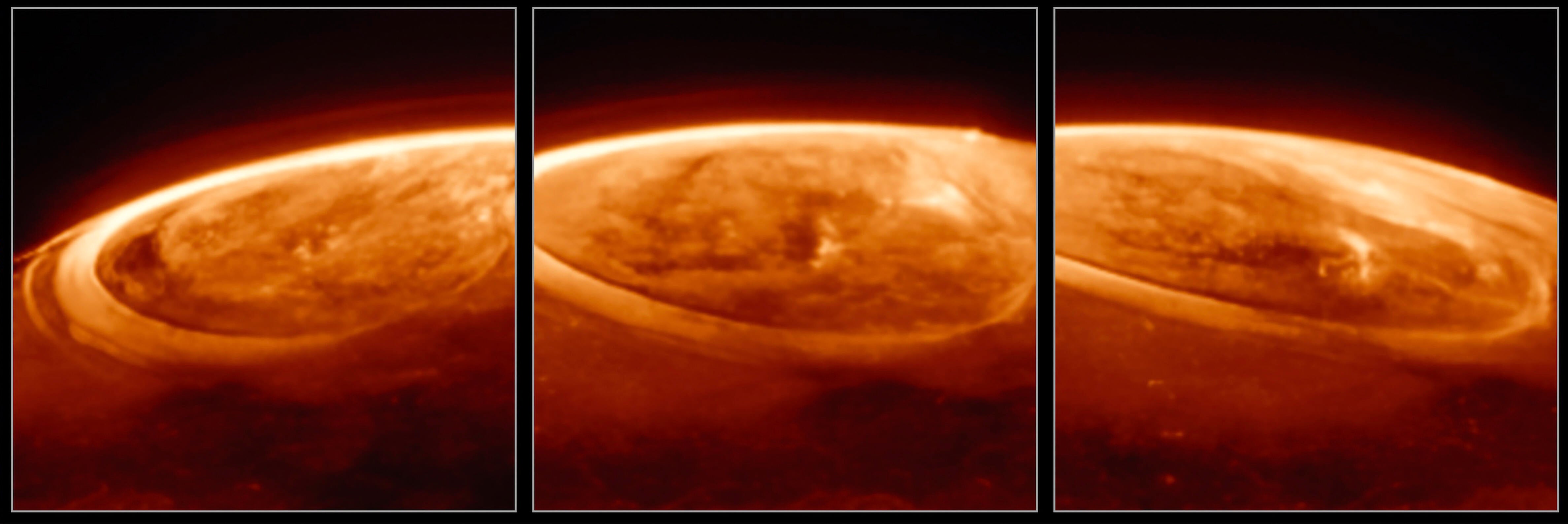Jupiter's dazzling auroras are hundreds of times brighter than those seen on Earth, new images from the James Webb Space Telescope reveal.
The solar system's largest planet displays striking dancing lights when high-energy particles from space collide with atoms of gas in the atmosphere near its magnetic poles, similar to how the northern lights are triggered on Earth.
 This image provided by NASA shows new details of the auroras on Jupiter captured by the James Webb Space Telescope.
NASA via AP
This image provided by NASA shows new details of the auroras on Jupiter captured by the James Webb Space Telescope.
NASA via AP
But Jupiter's version has much greater intensity, according to an international team of scientists who analyzed the photos from Webb taken on Christmas in 2023. Jonathan Nichols, from the University of Leicester in the United Kingdom, led the team. In a statement shared with NASA, he said their findings blew him away.
"We wanted to see how quickly the auroras change, expecting them to fade in and out ponderously, perhaps over a quarter of an hour or so," said Nichols. "Instead, we observed the whole auroral region fizzing and popping with light, sometimes varying by the second."
Learning more about the variability Nichols' team observed will help scientists better understand how Jupiter's atmosphere works, according to NASA.
 This image provided by NASA shows new details of the auroras on Jupiter captured by the James Webb Space Telescope.
NASA via AP
This image provided by NASA shows new details of the auroras on Jupiter captured by the James Webb Space Telescope.
NASA via AP
Webb's images of Jupiter may have also opened doors to new questions about the universe. When compared to images taken by the Hubble Space Telescope, which uses different wavelengths of light to capture them, scientists discovered that certain bright spots seen in Webb's images did not appear in Hubble's counterparts.
"This has left us scratching our heads," Nichols told NASA. "In order to cause the combination of brightness seen by both Webb and Hubble, we need to have a combination of high quantities of very low-energy particles hitting the atmosphere, which was previously thought to be impossible. We still don't understand how this happens."
Webb previously captured Neptune's glowing auroras in the best detail yet, many decades after they were first faintly detected during a flyby of the Voyager 2 spacecraft.







